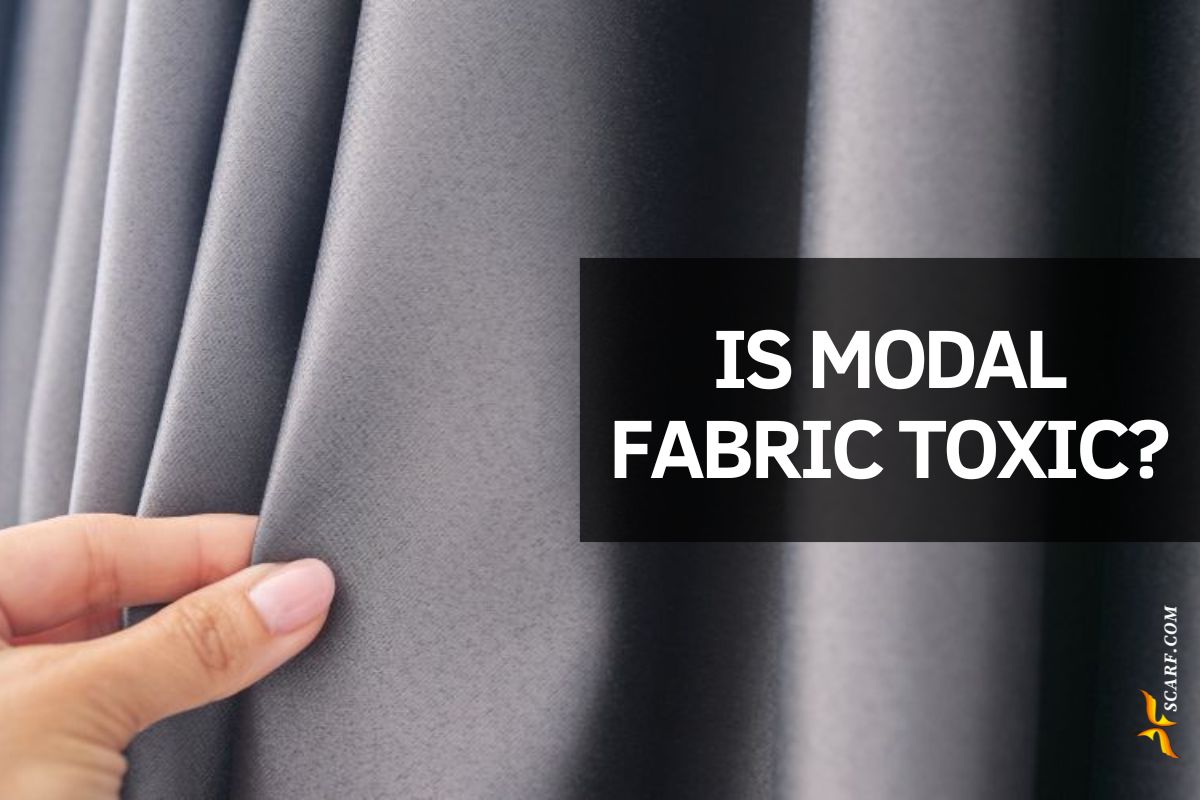Many people wonder is modal fabric toxic. Shoppers seek comfortable and safe clothing options. Modal feels incredibly soft against the skin. This softness makes it a favorite for everyday wear.
Short answer
No – modal fabric is not toxic to wear. Scientific assessments confirm its safety for direct skin contact. The fabric’s natural base and manufacturing controls ensure it remains non-toxic for consumers.
- Short answer
- What Is Modal Fabric?
- Is Modal Fabric Toxic to Wear?
- Is Modal an Eco-Friendly Fabric?
- Modal vs. Other Fabrics: A Quick Comparison
- How to Make Responsible Modal Choices
- The Bottom Line
- Frequently Asked Questions (FAQ)
- 1. Is modal fabric safe for babies?
- 2. Can modal fabric cause allergies?
- 3. Is modal better than cotton?
- 4. How should I wash modal clothing?
- 5. Does modal shrink?
- 6. Is modal a natural or synthetic fabric?
- 7. Why is modal so soft?
- 8. Is modal fabric breathable?
- 9. What is the difference between modal and lyocell?
- 10. Are there any undiscovered downsides to modal?
- Frequently Asked Questions (FAQ)
What Is Modal Fabric?
Modal belongs to the regenerated cellulose fiber category. It begins as wood pulp from beech trees. Manufacturers process the pulp using specialized methods. The result is a soft and durable textile. Modal shares characteristics with natural fibers. It is a variant of rayon. This fabric is often called a second-generation rayon. It represents an upgrade from traditional viscose.
How Is It Made?
Beech trees from sustainable forests provide the raw material. Workers harvest trees and convert them into wood chips. Factories extract cellulose from these chips. Cellulose forms the basic building block of plant walls. A chemical solution dissolves the cellulose. This solution passes through a spinneret. The spinneret shapes the liquid into fine threads. Modal fibers possess high wet modulus strength. They maintain integrity when wet. This quality distinguishes modal from earlier rayons.
Is Modal Fabric Toxic to Wear?
No – modal fabric is not toxic to wear.
The Fabric Itself is Safe
Modal fabric poses minimal risk to wearers. Its foundation is natural wood pulp. Finished cellulose fibers are biologically compatible. One source describes modal as “very healthy and environmentally friendly”. The material causes no harm to human skin. Many manufacturers test modal against international ECO-TEX standards. These certifications verify textile safety. Modal appears frequently in underwear and activewear collections.
What About Chemical Residues?
Production involves sodium hydroxide and carbon disulfide. These chemicals dissolve wood pulp effectively. Manufacturers implement thorough washing procedures. These processes remove chemical traces before clothing reaches stores. Reputable companies conduct rigorous fabric testing. They ensure minimal chemical presence. Additional dyes and finishes might introduce irritants. This concern applies to all textiles equally.
Is Modal an Eco-Friendly Fabric?
Environmental impact requires careful evaluation. Natural sourcing contrasts with industrial processing.
The “Green” Argument: Natural and Biodegradable
Modal offers several ecological advantages. Beech trees represent renewable resources. Fabric breaks down naturally after disposal. Sustainable forestry practices replenish wood sources. Lenzing corporation exemplifies responsible sourcing. Their modal comes from carefully managed forests.
The Environmental Concerns: The Manufacturing Process
Chemical usage presents the primary environmental challenge. Carbon disulfide raises particular concerns. Worker safety requires proper handling protocols. Traditional production consumes substantial water and energy. Modern closed-loop systems revolutionize this process. They recover over 99% of water and chemicals. New carbon footprint standards increase industry accountability.
Modal vs. Other Fabrics: A Quick Comparison
Understanding modal’s position helps consumers choose wisely.
Modal vs. Cotton
Modal feels noticeably softer than cotton. It absorbs 50% more moisture. This makes modal exceptionally breathable. Wet strength exceeds cotton’s durability. Cotton farming demands extensive water resources. Modal’s wood source requires less irrigation.
Modal vs. Synthetic Fabrics (Polyester, Nylon)
Modal provides superior breathability. It originates from plant materials rather than petroleum. Natural biodegradability distinguishes modal from synthetics. Synthetic fabrics shed microplastics during washing. Modal avoids this environmental contamination.
How to Make Responsible Modal Choices
Conscious selection improves your environmental contribution.
Seek TENCEL™ Modal certification from Lenzing. This guarantees sustainable production methods. Choose OEKO-TEX® Standard 100 certified fabrics. These certifications verify non-toxic manufacturing. Support brands demonstrating supply chain transparency. Proper care extends garment lifespan. Wash modal in cool water whenever possible. Gentle detergents preserve fiber quality. Air drying conserves energy effectively.
The Bottom Line
Modal fabric presents minimal toxicity concerns for wearers. Its natural origins provide fundamental safety. Modern manufacturing addresses historical environmental issues. TENCEL™ Modal represents the sustainability standard. This certification ensures closed-loop production methods. Modal delivers exceptional comfort through its soft texture. It offers practical benefits for active lifestyles. Informed selections promote healthier ecosystems. Your choices shape industry practices gradually.
Frequently Asked Questions (FAQ)
1. Is modal fabric safe for babies?
Modal’s softness suits delicate infant skin. Breathability prevents moisture buildup. OEKO-TEX certification provides additional reassurance.
2. Can modal fabric cause allergies?
Modal rarely triggers allergic reactions. Its hypoallergenic properties benefit sensitive individuals. Chemical-sensitive people should verify manufacturing standards.
3. Is modal better than cotton?
Modal surpasses cotton in softness and absorbency. Durability advantages appear during washing. Personal preference determines ideal selection.
4. How should I wash modal clothing?
Cool water preserves fiber integrity. Gentle cycles prevent unnecessary friction. Air drying maintains original dimensions.
5. Does modal shrink?
Modal demonstrates remarkable dimensional stability. Proper care minimizes size alterations. It outperforms cotton in shrinkage resistance.
6. Is modal a natural or synthetic fabric?
Modal occupies the semi-synthetic category. Natural wood pulp undergoes chemical transformation. This process regenerates cellulose into textile fibers.
7. Why is modal so soft?
Extremely fine fibers create smooth surfaces. This fineness generates luxurious tactile experiences. The weaving process enhances natural suppleness.
8. Is modal fabric breathable?
Superior moisture absorption keeps skin dry. Air circulation occurs freely through the fabric. It outperforms many synthetic alternatives.
9. What is the difference between modal and lyocell?
Lyocell represents advanced rayon technology. Its production uses environmentally preferred solvents. Both fabrics offer sustainable options when properly manufactured.
10. Are there any undiscovered downsides to modal?
Large-scale beech farming potentially affects biodiversity. Dyeing processes sometimes involve problematic chemicals. Comprehensive lifecycle assessments remain incomplete.
We specialize in customizing scarves, hats, clothing and accessories. Please feel free to contact us.



